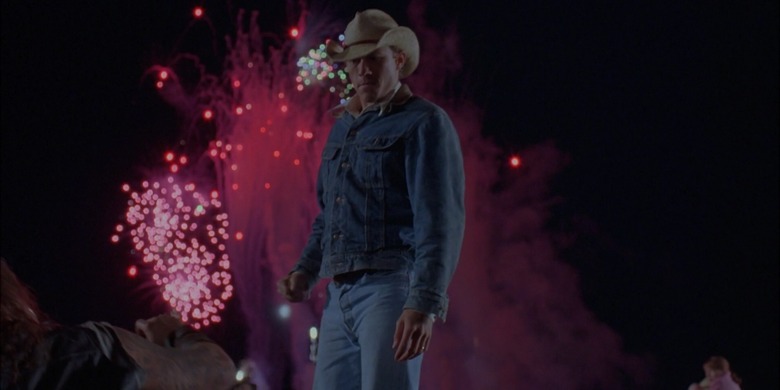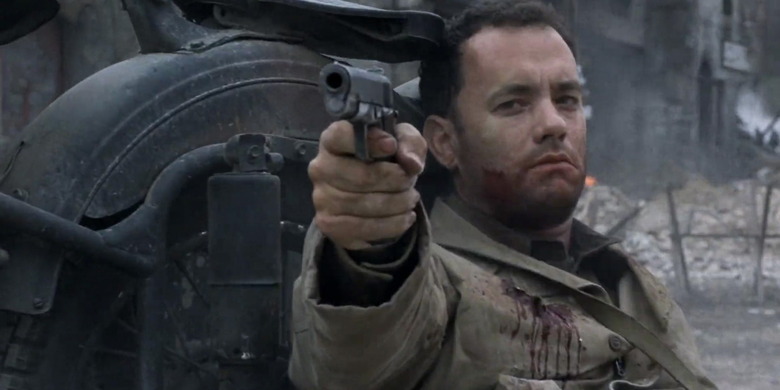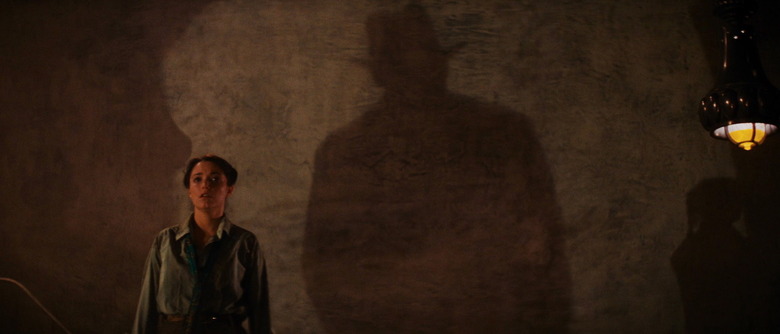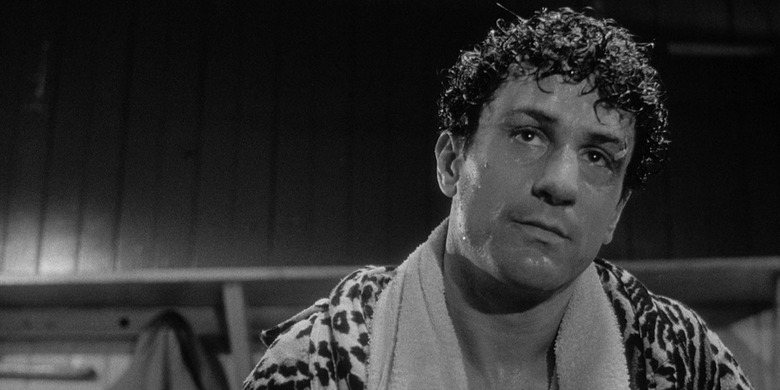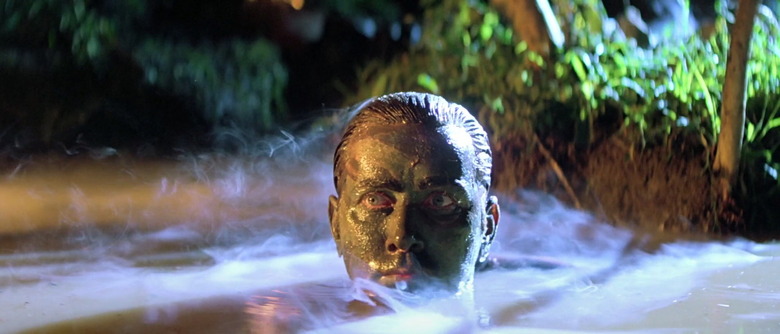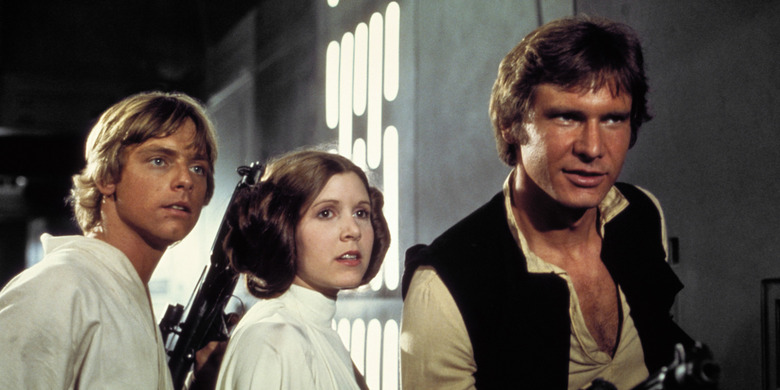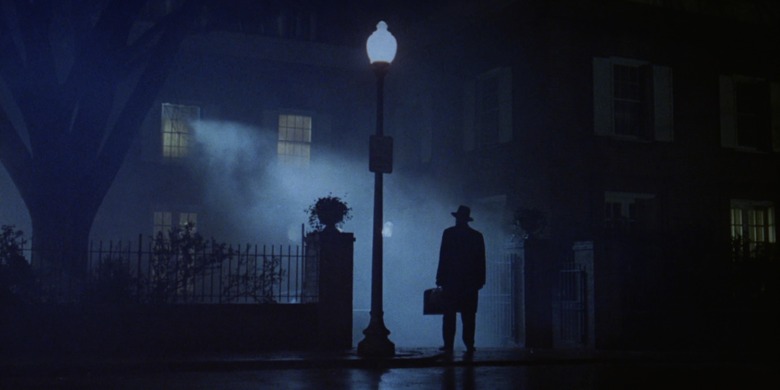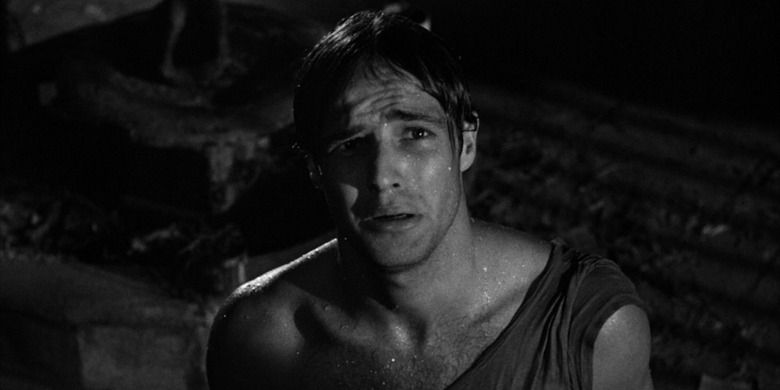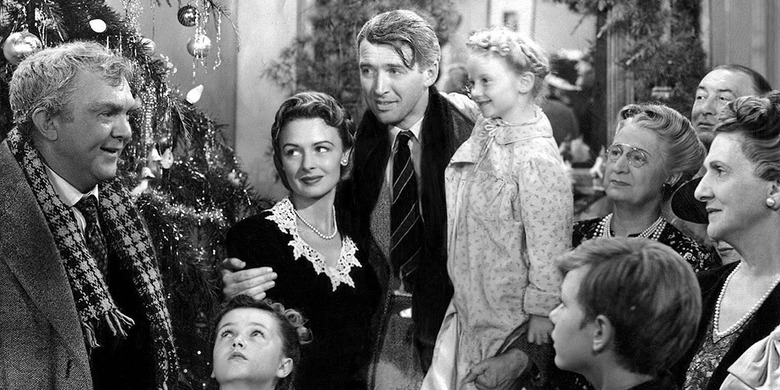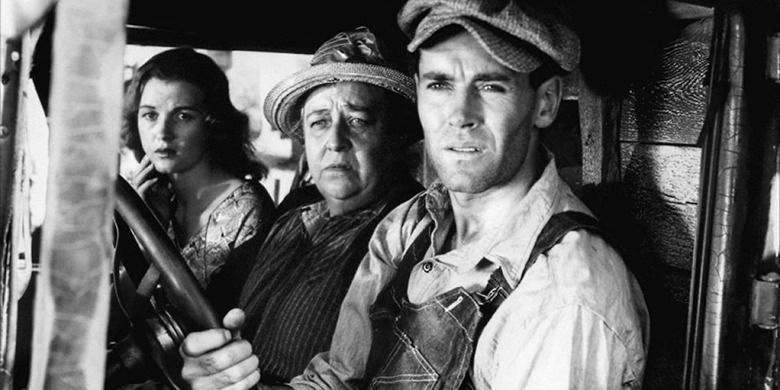10 Great Best Picture Nominees That Should Have Won
On Sunday, March 4, 2018, the Academy of Motion Picture Arts and Sciences will be holding its 90th ceremony. The Oscars are the Super Bowl for cinephiles. Though the true relevance of the ceremony is often questioned, it still carries prestige as the pre-eminent film awards event.
Looking back through nine decades worth of Best Picture nominees, it's clear there were a number of years where two or more iconic films were up against each other. 1994, for instance, featured an especially sticky three-way grudge match between Forrest Gump, Pulp Fiction, and The Shawshank Redemption (Gump's gotta go, but Shawshank? Never.) There are other years, however, where one nominated title pops up as a clear cut above the rest, and the fact that it did not win seems like an egregious miscarriage of movie justice.
You can't always fault the Academy for its short-sightedness. Time has a way of showing what really matters.
This is the time-traveler's list, the list that comes from the benefit of hindsight and should be delivered promptly into the hands of Academy members in the past. An important distinction to make about this list is that it only covers films that actually were nominated for Best Picture.
There are any number of worthy films like Do the Right Thing, 2001: A Space Odyssey, or Psycho that were inexplicably never nominated for Best Picture. We've actually got a separate list of those that Angie Han compiled for the site back in 2015. Way back in 2007, our fearless leader, Peter Sciretta, also compiled his own short list of nominees/non-nominees that should have won, but didn't.
Brokeback Mountain (2005)
Brokeback Mountain is one of the more infamous examples of a film that was snubbed for Best Picture at the Academy Awards. Leading up to Oscar night, Ang Lee's neo-Western romance had won enough Best Picture awards at other major ceremonies that it was heavily favored to win, but instead, the L.A. race-relations drama Crash claimed the golden statuette in a major upset.
Cultural attitudes were in an evolving state when Brokeback Mountain arrived. This film helped pave the way for last year's Best Picture winner, Moonlight. At the time, much of the media embraced it, yet it was still the subject of late-night talk show jokes, with hosts blithely referring to it as "that gay cowboy movie" – a phrase that caught on and seemed to reduce the film to a parody logline.
As much as Hollywood prides itself on having progressive values, the voting body of the Academy has traditionally been made up of an older white male majority that exhibits a conservative streak when it comes time to move beyond nominations to the real business of choosing winners. Since two years ago, the outcry on behalf of historically underrepresented groups has led to more diversity in nominations and wins. However, in the more nervously accepting atmosphere of early 2006 (as evidenced by all the jokes), some members may have been secretly hesitant about casting a ballot for a movie that depicted a love story between two men.
Brokeback Mountain is more than a love story, however. On its most universal level, it's a movie about repressed longing. Brought to life by Heath Ledger, who would win a posthumous Oscar three years later for The Dark Knight, Ennis Del Mar is a man who murmurs through a clenched mouth, often squinting, as if just the act of speaking requires tremendous effort for him. Bound by fear and responsibility, he denies what he really wants in life, making excuses, leaving his chance at happiness in a pickup truck's rearview mirror.
Saving Private Ryan (1998)
In 1993, the Best-Picture-winning Holocaust drama Schindler's List marked a seismic shift in Steven Spielberg's career. Collaborating with cinematographer Janusz Kaminski, the tone and color palette of Spielberg's films changed, with more desaturated colors leaking in as the director of a movie about a grown-up Peter Pan adopted less boyish, more adult concerns.
Before there was Dunkirk, there was Saving Private Ryan. Released the same year as Tom Brokaw's bestseller The Greatest Generation, which helped revive interest in the same era, Spielberg's World War II epic ranks as one of his finest films and one of the best war movies, period.
Last summer, Ethan Anderton closed out an edition of our /Answers column by talking about Saving Private Ryan in the context of the greatest war movie scenes. Eschewing the obvious choice of the film's D-day beach landing scene — with its visceral, harrowing images of men retrieving their own limbs and having their heads shot through after lucky helmet saves — he instead chose to focus on a more up-close knife-through-the-heart scene. Saving Private Ryan is full of personalized deaths and what this movie really seems to be about is heroism inspired not by patriotism, the waving of a bleached-out flag, but rather humanism.
The movie's tagline, "The mission is a man," references how a squad of eight men is sent in to rescue a single soldier whose brothers have all died in the war. To make this movie, Spielberg put his actors through boot camp and filmed the scenes in chronological order. Their camaraderie feels real and when some die, the loss is greater because we know them. It's a reminder of our forebears, how the sacrifices of those who went before us entrust us with the responsibility of living a good life.
Saving Private Ryan wasn't the only World War II movie nominated for 1998's Best Picture. The Thin Red Line, Terrence Malick's poetic return to cinema after a two-decade absence, also got nominated. But the winner was Shakespeare in Love, and the elephant in the room with that movie is, of course, Harvey Weinstein. With Shakespeare in Love, the disgraced mogul instituted a new model for cutthroat campaigning during awards season, appealing to the Academy's love of tales about showbiz people (Birdman and The Artist being other more recent examples).
Raiders of the Lost Ark (1981)
If cinema is the highest art form — because it's the ultimate hybrid of other art forms — then Raiders of the Lost Ark capitalizes on the medium's full potential to elevate its story. Made in the time before PG-13 (we have its sequel to thank for that rating), Spielberg's first Indiana Jones film plunges us into a B-movie world full of hard-drinking women, Nazi-saluting street monkeys, cackling Cairo henchmen, torture-device-like coat hangers, and a MacGuffin with the furious, face-melting power of God. Yet it somehow manages to wrap all this goofiness in memorable music, quotes, and images. It offers the complete package as a cinematic experience.
At the People's Choice Awards in '82, Raiders won "Favorite Motion Picture" and it feels like this is one instance where the people were ahead of the curve. Chariots of Fire is the film that won Best Picture at the Academy Awards that year. It's an inspiring sports movie with an instantly recognizable theme tune by Blade Runner composer Vangelis. At the same time, it's a film with considerably less cultural resonance than Raiders of the Lost Ark. If, as Indy says, "It's not the years, honey, it's the mileage," then Raiders is a film with far more mileage on it in theaters and home media.
The Academy should, of course, make merit-based selections without catering to popular tastes, but if there's one thing Oscar history shows, it's that the Academy has a tendency to discount good old-fashioned entertainment value in favor of straight-laced dramas with the veneer of more importance.
Raiders of the Lost Ark is an expertly staged action-adventure film that gave us one of cinema's greatest heroes, enough spectacular stunts to fill a whole theme park show, show-stopping set pieces like the Well of Souls and the boulder chase through a booby-trapped temple, and a number of musical cues from John Williams that could go toe-to-toe with that Chariots theme. No wonder Harrison Ford lost interest in Han Solo. In the whip-cracking archeologist who wears a Fedora and only fears snakes, he found an even better character to play. Even in silhouette, the figure of Indiana Jones is unmistakable, whether it be on a tavern wall or against the sun at a dig site.
Raging Bull (1980)
Robert Redford's directing debut, Ordinary People, won Best Picture at the Academy Awards for 1980. It's a finely acted drama that, among other things, showed a very different side of television icon Mary Tyler Moore.
Raging Bull has enjoyed more longevity. Critics like Siskel & Ebert and polls in magazines like American Film have consistently named Martin Scorsese's boxing biopic the best film of the '80s. In a first for the National Film Registry, this movie was inducted in its very first year of eligibility. Like the next entry on this list, however, it was not universally well-received in its day. It also happened to come right on the heels of more crowd-pleasing boxing feature, Rocky, which won the Best Picture award for 1976. This wouldn't be the only time Scorsese lost to a big-name actor turned first-time director: it happened again 10 years later when Kevin Costner's Dances with Wolves beat Goodfellas.
Telling the story of middleweight prizefighter Jake LaMotta, Raging Bull unfolds in beautiful black-and-white like a confession of proud and shameful memories. It's a tale of self-destructiveness and forsaken potential where the champion is left stripping his belt for jewels and literally beating his own head against the wall of a dark cell by the end.
Through much of his life, LaMotta is able to sublimate that destructive energy of his into the boxing ring. Driven by deep-seated insecurities, he's essentially a functional self-destroyer. Even at the height of his career, however, there's something within him that is unable to enjoy success and nurtures the desire to tear down everything he has built, including his relationship with his wife and his brother, played respectively by Cathy Moriarty and Joe Pesci (in his first major role).
Robert De Niro's performance in Raging Bull is the stuff of cinematic legend. It's possible there are younger film-lovers out there who have not yet discovered De Niro in his peak period. Suffice it to say, De Niro's remarkable physical transformation in this film, from a boxer in fighting shape to a washed-up, overweight lounge entertainer, set the template for the likes of Christian Bale in the 21st century.
Apocalypse Now (1979)
Apocalypse Now is the textbook example of a film that garnered a mixed reception upon its release and would not be fully appreciated until later. Back in 1979, critics like Roger Ebert regarded it as a masterpiece, but the Vietnam War was still fresh in the public mind and many reviewers saw the film as overwrought — not unlike its legendary and infamous production. Filmed on location in the Philippine jungle, the movie was famously beset by a typhoon, tropical diseases, and stories of wild excess that sent it over budget and threatened the health and sanity of its cast and crew.
In this film, the frightening absurdity and lie of the war plays out in a picaresque fashion as a U.S. special ops officer boards a river patrol boat on a mission to assassinate a rogue colonel named Kurtz, who has set himself up as a demi-god in Cambodian territory. This narrative paralleled the making of the film, with Francis Ford Coppola briefly becoming the media portrait of a megalomaniacal movie director gone AWOL.
More than any other film — even William Friedkin's Sorcerer, with its trucks full of nitroglycerine, traveling across a rickety wooden bridge — Apocalypse Now seemed to symbolize the precarious, unfettered creativity and ego-driven madness of the New Hollywood, or American New Wave. The film's Best Picture loss to the divorce drama Kramer vs. Kramer can perhaps be seen as a reckoning against the movement, or indeed, a divorce from it. Another Vietnam epic, The Deer Hunter, had already taken Best Picture the year before, and that would be the last New Hollywood film to win.
As it drifts upriver through clouds of colored smoke, Apocalypse Now is a movie that seems to proceed from the most mythic, dreamlike depths of the human psyche. Echoing Kurtz's words at the end of the film, Coppola once said, "It struck me like a diamond bullet in my head that I wasn't making the film, the jungle was." That diamond bullet left an exit wound in Coppola's career and has been tearing through time ever since.
Star Wars (1977)
So much has been written about Star Wars already, but really, that's the point. It's a movie that spawned a multimedia empire and touched people all around the world. But again, the Academy often overlooks the merits of what's popular or entertaining in favor of upholding its professional pride and putting the spotlight on what it considers to be more "serious" works of artistry. As people lined up outside cinemas nationwide to see Star Wars, Oscar voters distinguished themselves from the rabble by awarding Annie Hall Best Picture. The question now: is Star Wars a greater artistic achievement?
In the wake of #MeToo, Woody Allen's name has become more stigmatized than ever, but he's hard to avoid in a discussion of Oscar history since he's received two dozen nominations since 1977. Annie Hall was the beginning of the Academy's obsessive preoccupation with Allen. Historically, it's been regarded as one of the greatest romantic comedies of all time.
Star Wars is in a different league. In 1997, on the American Film Institute's first list of the 100 greatest American movies of all time, Star Wars rounded out the top 15. On the 10th-anniversary list in 2007, it had climbed the rankings to #13. If the AFI had done another list in 2017, it wouldn't have been surprising to see this 40-year-old space opera crack the top 10.
Together with Jaws, Star Wars is the movie that birthed the blockbuster. It's also a movie that is no less an auteurist work than Annie Hall. With George Lucas serving as writer-director, A New Hope has a purity of vision that even its superior sequel, The Empire Strikes Back, cannot claim. Lucas was young and surrounded not only by talented collaborators, but also by New Hollywood peers, fellow "movie brats" who helped rein in some of his more questionable instincts. Imagination-wise, this is a movie where the music, costume design, and so many other elements were firing on all cylinders. Everything came together to form the perfect combustion of fairy-tale lightning in a space bottle.
The Exorcist (1973)
The Exorcist is arguably the greatest horror film ever made. When you have something that's the pinnacle of a whole genre going up against other films, that carries a lot of weight. The 2009 expansion of the Best Picture category opened up the field to more genre contenders, but if you're a filmmaker working outside the realm of human-interest dramas, the Academy is more likely to throw a nomination your way than a win. Horror ostensibly appeals to a narrower audience.
In Oscar history, it also sometimes feels like the Academy attempts to give belated recognition to certain names as a kind of consolation prize for not awarding them earlier. The Sting, which won Best Picture for 1973, is a classic caper film, but it's actually not Paul Newman and Robert Redford's best movie. That distinction belongs to Butch Cassidy and the Sundance Kid, which was passed over for 1969's Best Picture in favor of Midnight Cowboy.
The real battle for 1973 isn't between The Exorcist and The Sting. It's between The Exorcist and American Graffiti. But again, The Exorcist has the weight of a whole genre behind it, and in this case, its elemental power as a tale of good-versus-evil is unmatched by a feel-good coming-of-age comedy.
The only horror film to ever win Best Picture was The Silence of the Lambs in 1991. That film lacked a supernatural aspect; it was more a dramatic showcase for Jodie Foster and Anthony Hopkins, bundled up in the skin of a serial killer thriller. The Exorcist has a more fantastic premise: it's about two priests attempting to exorcise a demon from a little girl.
What keeps the film grounded and makes it work, however, is that it was written by a Catholic but directed by an agnostic with a background in documentary features. After young Regan MacNeil uses a Ouija board to solicit what seems like an imaginary friend, the horror unveils slowly and is first submitted to rigorous skeptical procedures. By the time the two priests enter Regan's room to combat the head-spinning, projectile-vomiting demon, disbelief is sufficiently suspended and our spirits quake with every utterance of "The power of Christ compels you!"
A Streetcar Named Desire (1951)
An American in Paris, the movie that won Best Picture for 1951, is a classic film. It's just not a better film than A Streetcar Named Desire. Moreover, the fact that it won the year before may have contributed directly to the lack of a Best Picture nomination for Singin' in the Rain in 1952.
This is one of those instances where Doc Brown needs to actually exit the DeLorean with our time-traveling list carrier and seize historical Academy members by the lapels. Only the sight of his bug-eyed, frizzy-haired face could impress upon them the warning: "Conserve your votes! There's a better Gene Kelly musical coming next year!"
A Streetcar Named Desire's loss can perhaps be attributed to its theater roots and controversial director. This is a psychologically complex film whose virtues were partially discounted because it originated as a stage play and almost has the look of one. Much of it was imported straight from Broadway, with Vivien Leigh bringing her Gone with the Wind luminescence to bear as the only new principal cast member. It wasn't outwardly cinematic enough...or maybe it just happened to represent a new kind of cinema.
Adding to this is the fact that details of director Elia Kazan's initial closed-door testimony to the House Committee on Un-American Activities had already leaked to the press. His later public testimony tarnished his reputation within the industry, but before that, Kazan served as co-founder of the Actors Studio (of Inside the Actors Studio fame). Though it has almost become a byword now, the "Method" school of acting — whereby an actor lives the part, funneling sincere emotions into his or her performance from deep within, sometimes even staying in character off-camera — has given us some of cinema's greatest performances.
One of those is Marlon Brando as Stanley Kowalski, the abusive, sullying lifeforce prowling A Streetcar Named Desire. His victimization of Blanche Dubois, a strong yet vulnerable woman clinging to her integrity, but unraveling against harsh reality, remains all the more relevant in 2018. Blanche is every woman given a raw deal by society. Stanley's brute soul cries out across time, "Hey, Oscarrr!"
It's a Wonderful Life (1946)
The title says it all. More than just a holiday classic, It's a Wonderful Life is one of the most life-affirming movies ever made. Carefree and corny at times, grim and pessimistic at others, it's perhaps best summed up by the scene where the floor suddenly opens out from under its main character, leaving him dancing dangerously close to the edge of a swimming pool. He falls into the pool...but he's not alone. Everybody jumps in after him.
In the immediate aftermath of World War II, it's understandable, perhaps, that a film called The Best Years of Our Lives, about American soldiers returning home from the war, would take home the Best Picture Oscar for 1946. It really wasn't until decades after its theatrical release, when It's a Wonderful Life became a fixture of Christmastime programming, that it found its belated audience on television. Since then, the familiar beats of its last act have been echoing across pop culture.
A despondent banker named George Bailey, played by Jimmy Stewart, contemplates suicide on a snowy bridge, only to have his guardian angel intervene and show him how all the lives he's touched would be adversely affected if he had never been born. Cynical minds might be inclined to cry "sentimental hogwash" the way Mr. Potter, the richest and meanest man in town, does. The movie itself even considers such perspectives.
It's a Wonderful Life is a film that goes to some dark places and is not afraid to confront the ugly side of human nature. At one point, having lashed out at his family and berated his daughter's teacher over the phone, George saddles up at a bar with dark circles under his eyes, where he starts praying under his breath. A minute later, he gets punched in the face for his troubles.
Instead of wallowing in misery, however, It's a Wonderful Life chooses to uplift. A consummate tearjerker, Frank Capra's film holds an irrepressible exuberance that simply cannot be denied.
The Grapes of Wrath (1940)
John Steinbeck's The Grapes of Wrath is a novel that was banned and even burned in some places around the country, including Kern County, California, just a couple hours north of Hollywood. With the film adaptation starring Henry Fonda trailing such controversy, it's not surprising that the Academy would once again go with the safer Best Picture option. When people think Alfred Hitchcock, Rebecca is probably not the first title that comes to mind, but that's the film of his that won Best Picture.
This is one of those years, like the two at the top of this list, where different films won for Best Director and Best Picture. Hitchcock would go home empty-handed every time he got nominated, whereas John Ford would scoop up the second of four trophies here, the most of any director in Oscar history.
The Grapes of Wrath follows the plight of the Joads, a family of down-and-out "Okies:" sharecroppers kicked off their tenant farm in the dust bowl of Oklahoma. Overloaded with people and possessions, everything they have left in the world, their truck sets out across Route 66, migrating west, lured by fliers for fruit-picking work, the promise of a better life. What they find, instead, are transient camps where wage offers are unfair and trigger-happy sheriffs gun down innocent bystanders.
The film came at a time when there was a sharp political divide in America and social justice was an important issue. Describing it that way makes it sound like it could have come out yesterday. It doesn't take Bruce Springsteen singing about the ghost of Tom Joad to illustrate this movie's continued relevance.
What makes The Grapes of Wrath so timeless is that it's a film about the resilience of the human spirit in the face of hardship. Glimmers of hope and unbearable loss shine through its characters' monologues as if indeed "touched" by something greater. The movie is full of glassy-eyed faces whose yearning still manages to be felt across the decades.
In the end, the history of the Best Picture award and the Oscars, in general, is as much a chronicle of cultural conditions and Academy politics as it is a chronicle of artistry.

